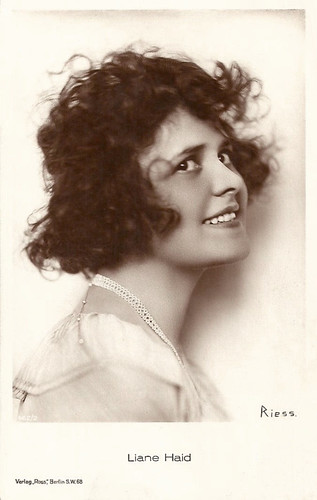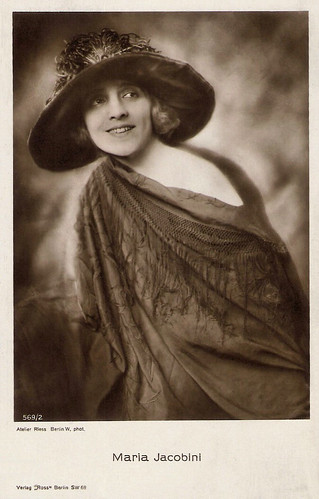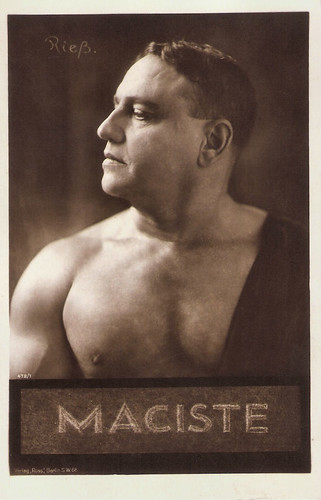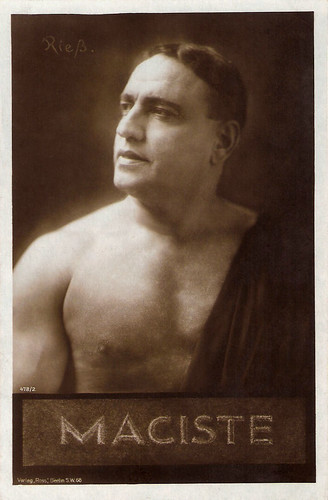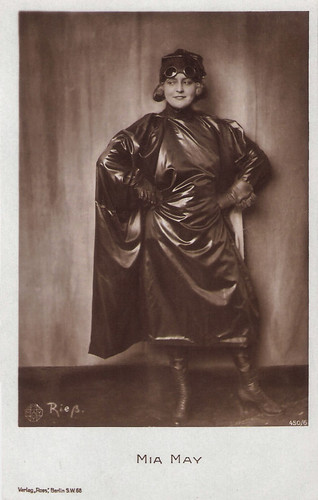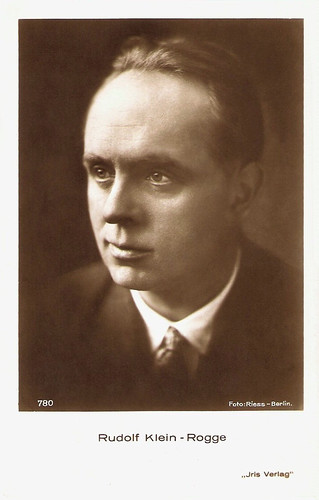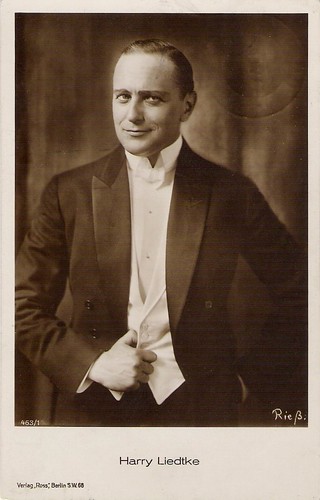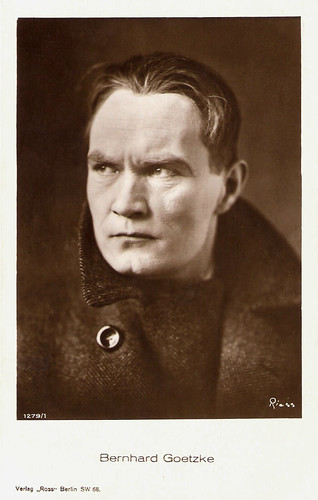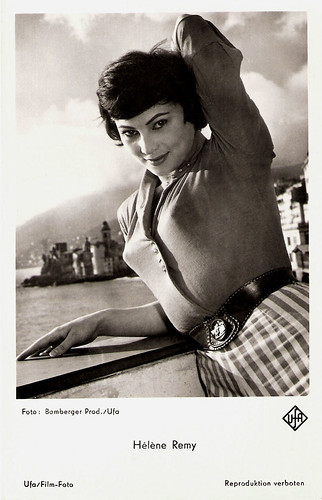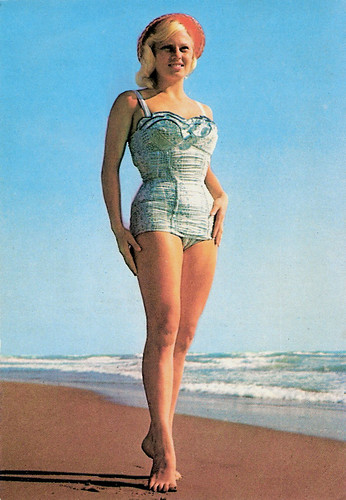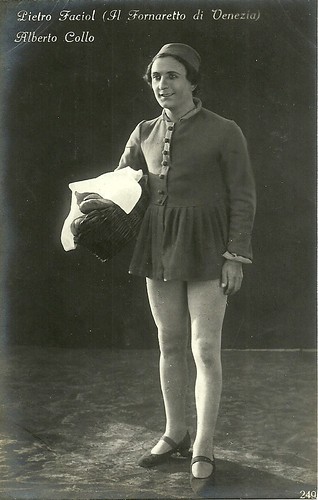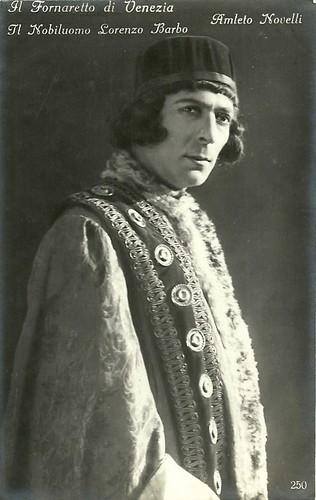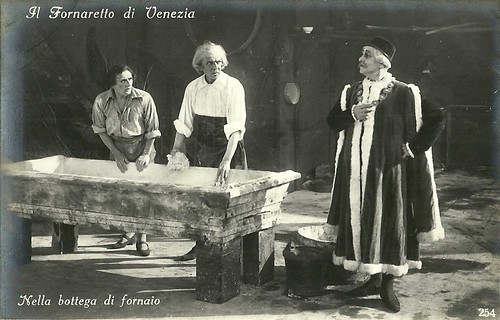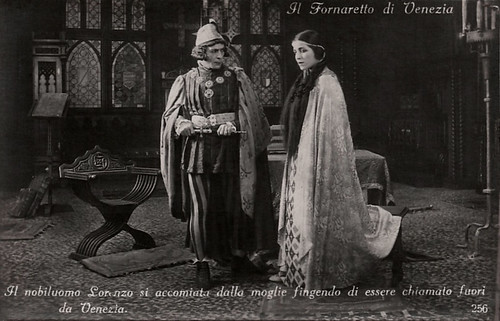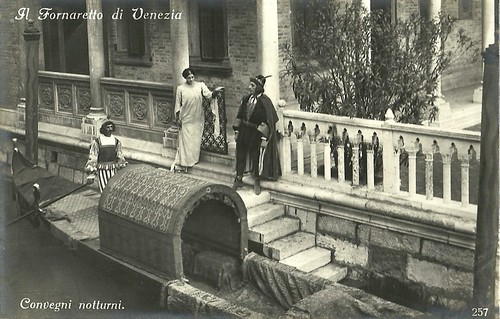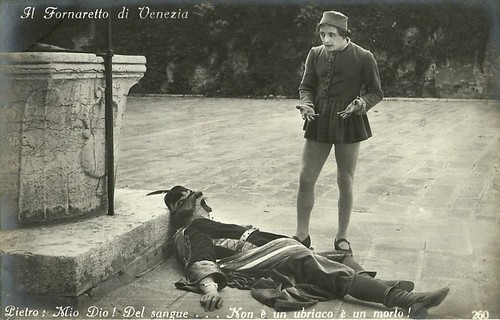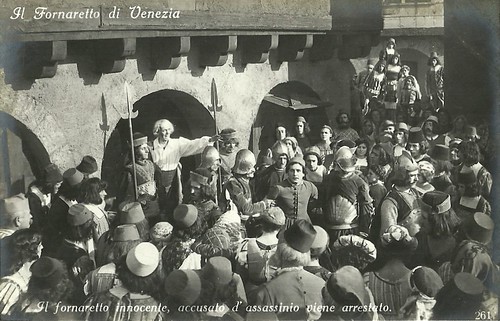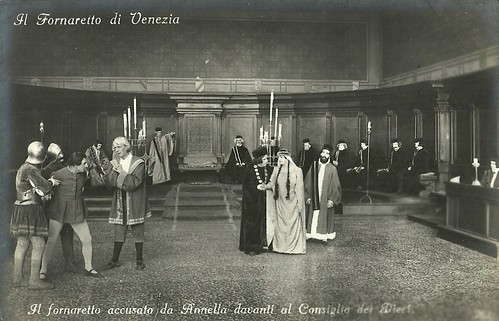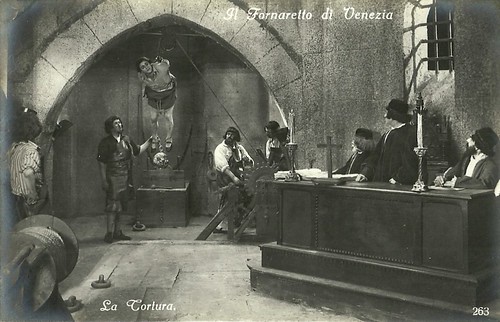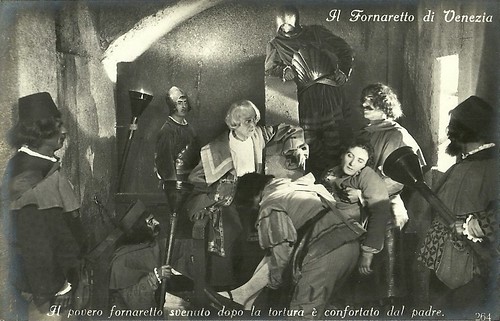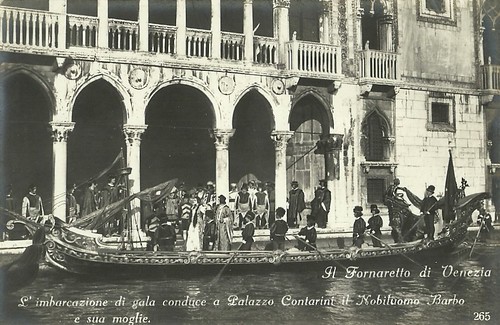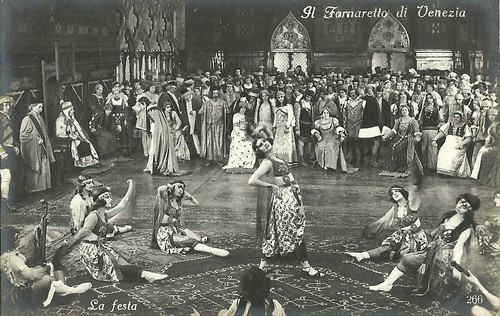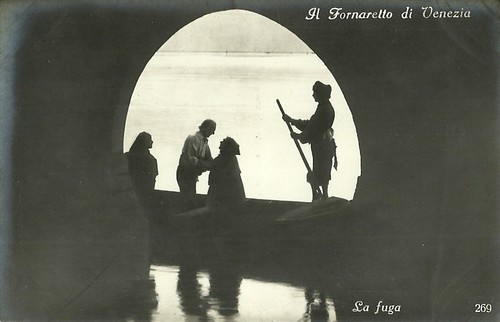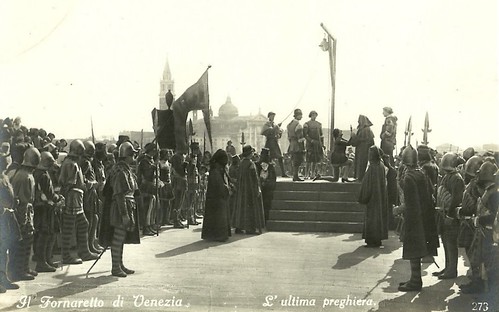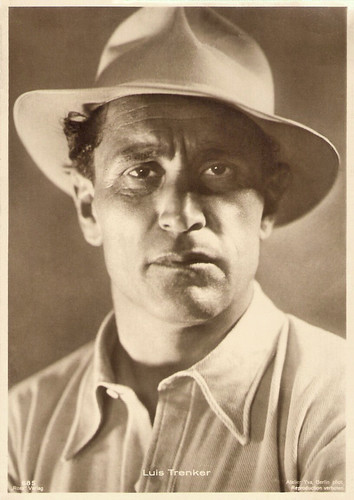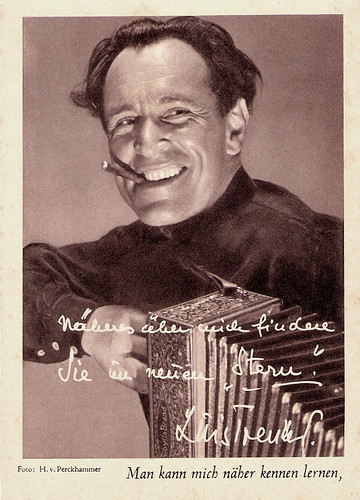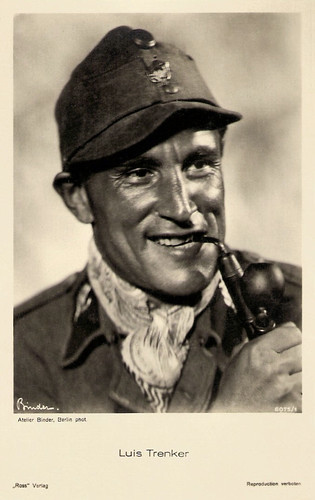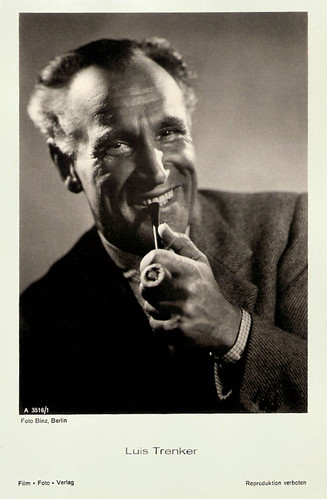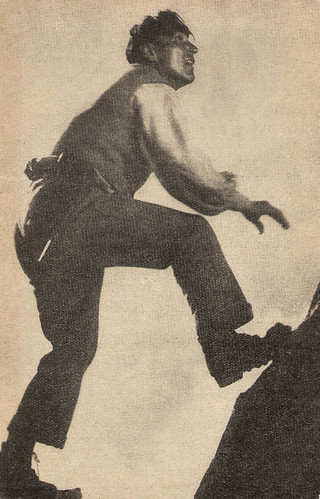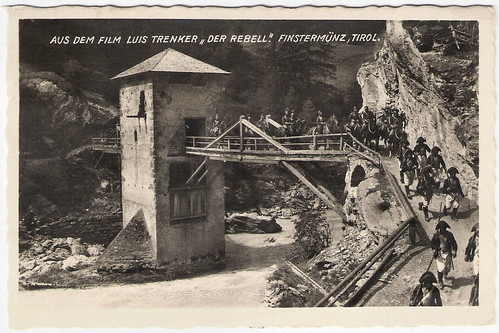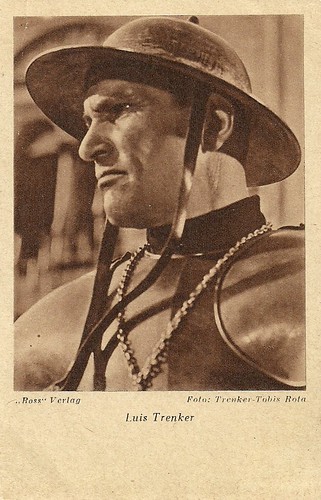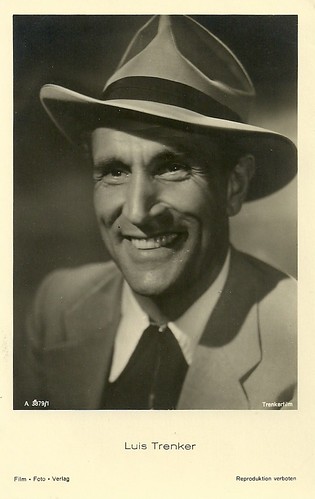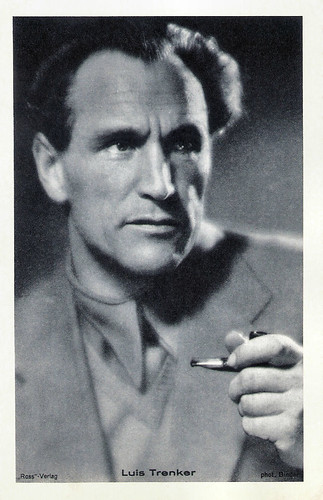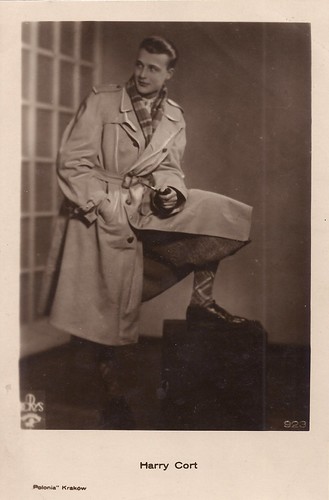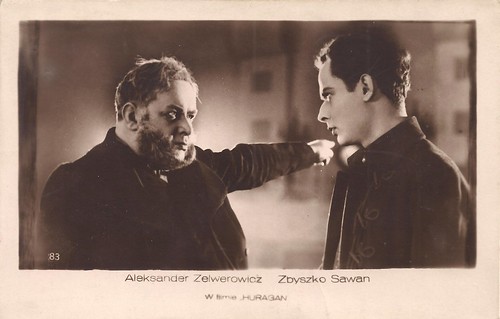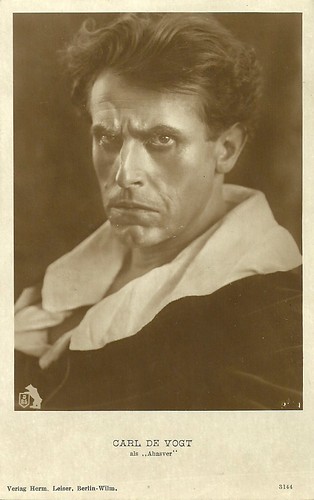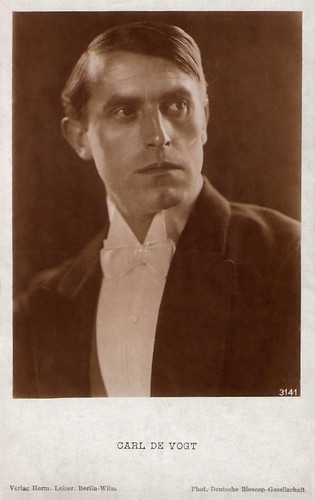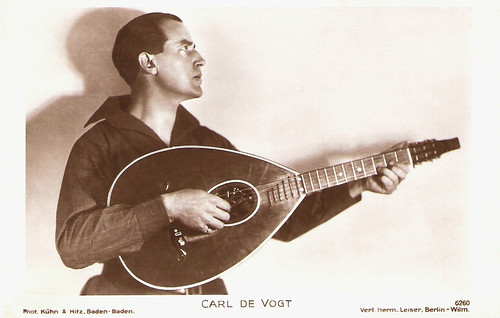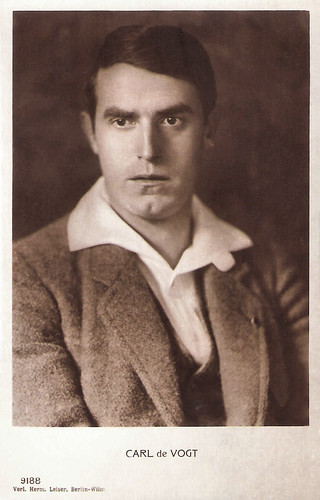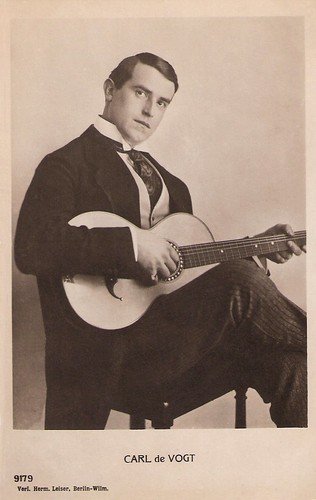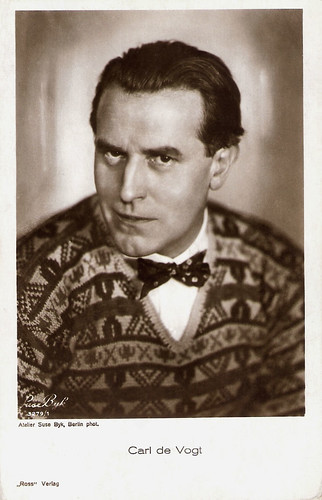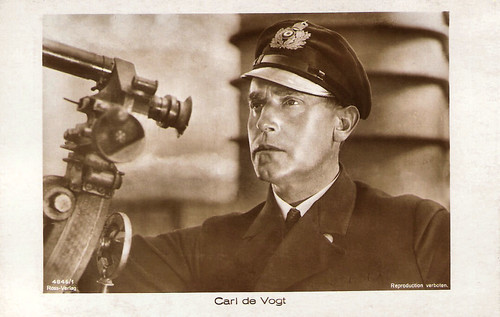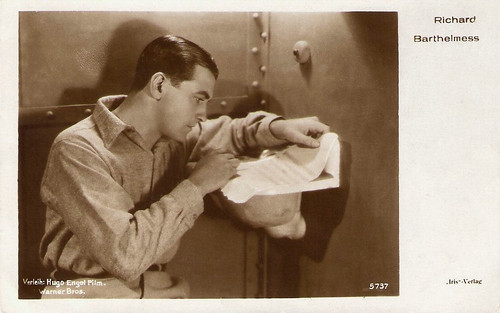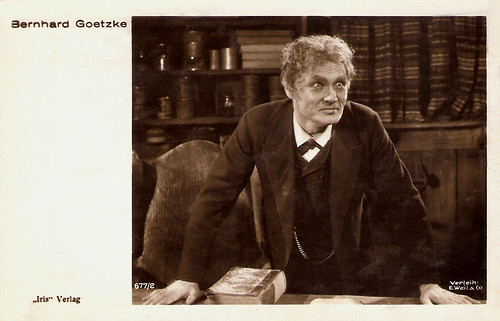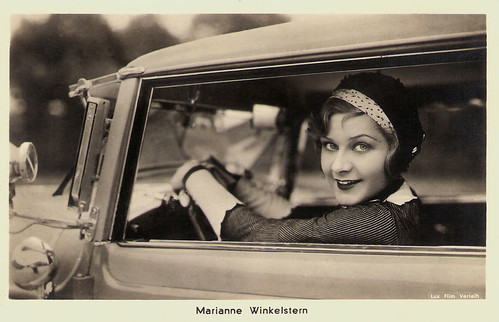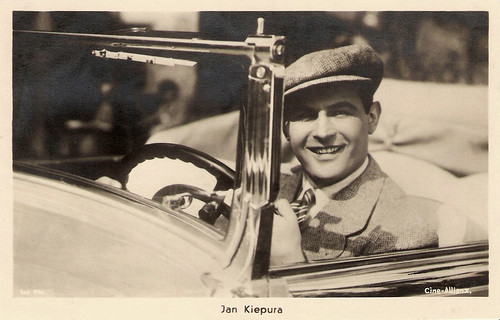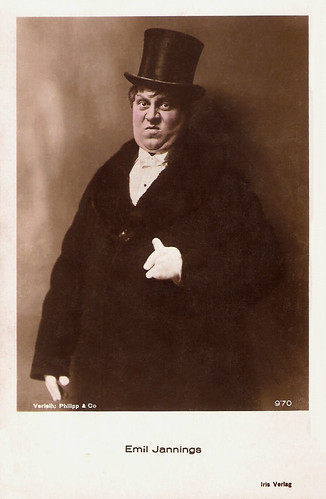German actor and director Alwin Neuss (1879-1935) started his film career at the pioneering Nordisk studio in Denmark. He was known for playing Sherlock Holmes in a series of silent films during the 1910s.
![Alwin Neuss]()
German postcard by Photochemie, Berlin, no. K 1439. Photo: Alex Binder, Berlin.
![Alwin Neuss]()
German postcard by Photochemie, Berlin, no. K. 1442. Photo: Alex Binder, Berlin.
![Alwin Neuss]()
German postcard by Photochemie, Berlin, no. K. 1482. Photo: Alex Binder, Berlin.
Carl Alwin Heinrich Neuss was born in 1879 in Cologne, Germany. He was the son of a government official.
Neuss made his stage debut in 1895 in Cologne at the Sommerbühne Flora, followed by engagements in Bremen, Magdeburg, Innsbruck, Breslau and Dresden. From 1903 he was a member of the Deutsches Theater in Berlin, with whom he undertook tours in several European countries.
He began his film career in the early Danish cinema. For the Nordisk studio, he played a spy in August Blom’s silent film Spionen fra Tokio/The Red Light (1910). He appeared in the double role of Dr. Jekyll and Mr. Hyde in the horror film Den skæbnesvangre opfindelse/Dr. Jekyll and Mr. Hyde (August Blom, 1910), one of the first adaptations of the famous novel by Robert Louis Stevenson.
He also appeared as Sherlock Holmes in another Nordisk production, Den stjaalne millionobligation/The Stolen Legacy (1911). That year, he also featured in Hamlet (August Blom, 1911) based on the play by William Shakespeare.
He moved on to the new German film company Atlantic-Film Aarhus GmbH, for which he started to make films like Seine erste Liebe/His first Love (Alwin Neuss, 1911), and Alwin auf der Hochzeitsreise/Alwin on Honeymoon (Alwin Neuss, 1911), both with Dorrit Weixler.
He returned as Sherlock Holmes in Der Hund von Baskerville/Hound of the Baskervilles (Rudolf Meinert, 1914) with Hanni Weisse. It was the first film adaptation of the famed Arthur Conan Doyle novel.
Films based on mystery novels were very successful in German cinema at the time and Der Hund von Baskerville was so successful, it spawned five more films: Das einsame Haus/The Isolated House (Rudolf Meinert, 1914), Das unheimliche Zimmer/The eerie room (Richard Oswald, 1915), Die Sage vom Hund von Baskerville/The legend of the Hound of the Baskervilles (Richard Oswald, 1915), Dr. MacDonalds Sanatorium (Willy Zeyn, 1920), and Das Haus ohne Fenster/The house without windows (Willy Zeyn, 1920).
Ness played Holmes in the first three sequels, but was replaced in the last two by Erich Kaiser-Titz.
![Alwin Neuss]()
German postcard by NPG (Neue Photographische Gesellschaft), no. 823. Photo: Becker & Maass, Berlin.
![Alwin Neuss]()
German postcard by Rotophot in the Film Sterne series, no. 502/3. Photo: Decla. Publicity still for Die Faust des Schicksals/Fist of Doom (Alwin Neuss, 1917) with Ressel Orla.
![Alwin Neuss]()
German postcard by Verlag Hermann Leiser, Berlin-Wilm., no. 7126. Photo: Decla-Film. On the back a stamp of U.T.-Lichtspiele, Barmen [Wuppertal], Cleferstrasse.
![Alwin Neuss]()
German postcard by Verlag Hermann Wolff, Berlin, no. F 128. Photo: Alex Binder, Berlin.
Alwin Neuss moved on to the Decla studio, where he directed himself in many films. These included Dynamit/Dynamite (Alwin Neuss, 1916) with Bruno Kastner, Die Spinne/The Spider (Alwin Neuss, 1917), and Das Spiel vom Tode/The game of death (Alwin Neuss, 1917) with Käthe Haack.
In several films, he played the detective Tom Shark like in Das Licht im Dunkeln/The light in the dark (Alwin Neuss, 1916).
After the war, Alwin Neuss directed the Leo Tolstoy adaptation Lebendig tot/Living dead (Alwin Neuss, 1918) starring Lil Dagover. With Dagover, he also appeared in Bettler GmbH/Beggars Ltd. (Alwin Neuss, 1919), which was written by Fritz Lang. Lang also wrote Die Rache ist mein/Vengeance is Mine (Alwin Neuss, 1919).
During the 1920s, his fame began to fade and Neuss only appeared in a few films, including Auf Befehl der Pompadour/On the command of Pompadour (Friedrich Zelnik, 1924) with Lya Mara.
His last films were two sound films. In Der Tanz ins Glück/Dance Into Happiness (Max Nosseck, 1930), he played a supporting part. In Das alte Lied/The Old Song (Erich Waschneck, 1930), starring Lil Dagover, he only had a small part.
His final film as a director had been the silent production Strassenbekanntschaften/Street acquaintances (Josef Medeotti-Bohác, Alwin Neuss, 1929). Then he returned to the theatre.
Alwin Neuss died in 1935 in Berlin, Germany. He was 56. Alwin Neuss was married to Anna Klara Warczok.
![Alwin Neuss]()
German postcard by Photochemie, Berlin, no. K. 1507. Photo: Alex Binder, Berlin.
![Alwin Neuss]()
German postcard by Rotophot in the Film Sterne series, no. 83/2. Photo: Karl Schenker, Berlin.
![Alwin Neuss]()
German postcard by Rotophot in the Film Sterne series, no. 83/4. Photo: Karl Schenker, Berlin.
Sources: Thomas Staedeli (Cyranos), Filmportal.de, Wikipedia and IMDb.
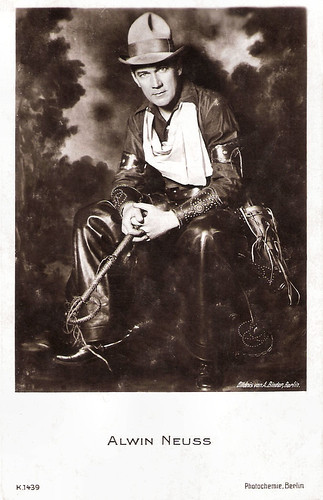
German postcard by Photochemie, Berlin, no. K 1439. Photo: Alex Binder, Berlin.

German postcard by Photochemie, Berlin, no. K. 1442. Photo: Alex Binder, Berlin.

German postcard by Photochemie, Berlin, no. K. 1482. Photo: Alex Binder, Berlin.
Dr. Jekyll and Mr. Hyde
Carl Alwin Heinrich Neuss was born in 1879 in Cologne, Germany. He was the son of a government official.
Neuss made his stage debut in 1895 in Cologne at the Sommerbühne Flora, followed by engagements in Bremen, Magdeburg, Innsbruck, Breslau and Dresden. From 1903 he was a member of the Deutsches Theater in Berlin, with whom he undertook tours in several European countries.
He began his film career in the early Danish cinema. For the Nordisk studio, he played a spy in August Blom’s silent film Spionen fra Tokio/The Red Light (1910). He appeared in the double role of Dr. Jekyll and Mr. Hyde in the horror film Den skæbnesvangre opfindelse/Dr. Jekyll and Mr. Hyde (August Blom, 1910), one of the first adaptations of the famous novel by Robert Louis Stevenson.
He also appeared as Sherlock Holmes in another Nordisk production, Den stjaalne millionobligation/The Stolen Legacy (1911). That year, he also featured in Hamlet (August Blom, 1911) based on the play by William Shakespeare.
He moved on to the new German film company Atlantic-Film Aarhus GmbH, for which he started to make films like Seine erste Liebe/His first Love (Alwin Neuss, 1911), and Alwin auf der Hochzeitsreise/Alwin on Honeymoon (Alwin Neuss, 1911), both with Dorrit Weixler.
He returned as Sherlock Holmes in Der Hund von Baskerville/Hound of the Baskervilles (Rudolf Meinert, 1914) with Hanni Weisse. It was the first film adaptation of the famed Arthur Conan Doyle novel.
Films based on mystery novels were very successful in German cinema at the time and Der Hund von Baskerville was so successful, it spawned five more films: Das einsame Haus/The Isolated House (Rudolf Meinert, 1914), Das unheimliche Zimmer/The eerie room (Richard Oswald, 1915), Die Sage vom Hund von Baskerville/The legend of the Hound of the Baskervilles (Richard Oswald, 1915), Dr. MacDonalds Sanatorium (Willy Zeyn, 1920), and Das Haus ohne Fenster/The house without windows (Willy Zeyn, 1920).
Ness played Holmes in the first three sequels, but was replaced in the last two by Erich Kaiser-Titz.

German postcard by NPG (Neue Photographische Gesellschaft), no. 823. Photo: Becker & Maass, Berlin.

German postcard by Rotophot in the Film Sterne series, no. 502/3. Photo: Decla. Publicity still for Die Faust des Schicksals/Fist of Doom (Alwin Neuss, 1917) with Ressel Orla.

German postcard by Verlag Hermann Leiser, Berlin-Wilm., no. 7126. Photo: Decla-Film. On the back a stamp of U.T.-Lichtspiele, Barmen [Wuppertal], Cleferstrasse.

German postcard by Verlag Hermann Wolff, Berlin, no. F 128. Photo: Alex Binder, Berlin.
Fritz Lang
Alwin Neuss moved on to the Decla studio, where he directed himself in many films. These included Dynamit/Dynamite (Alwin Neuss, 1916) with Bruno Kastner, Die Spinne/The Spider (Alwin Neuss, 1917), and Das Spiel vom Tode/The game of death (Alwin Neuss, 1917) with Käthe Haack.
In several films, he played the detective Tom Shark like in Das Licht im Dunkeln/The light in the dark (Alwin Neuss, 1916).
After the war, Alwin Neuss directed the Leo Tolstoy adaptation Lebendig tot/Living dead (Alwin Neuss, 1918) starring Lil Dagover. With Dagover, he also appeared in Bettler GmbH/Beggars Ltd. (Alwin Neuss, 1919), which was written by Fritz Lang. Lang also wrote Die Rache ist mein/Vengeance is Mine (Alwin Neuss, 1919).
During the 1920s, his fame began to fade and Neuss only appeared in a few films, including Auf Befehl der Pompadour/On the command of Pompadour (Friedrich Zelnik, 1924) with Lya Mara.
His last films were two sound films. In Der Tanz ins Glück/Dance Into Happiness (Max Nosseck, 1930), he played a supporting part. In Das alte Lied/The Old Song (Erich Waschneck, 1930), starring Lil Dagover, he only had a small part.
His final film as a director had been the silent production Strassenbekanntschaften/Street acquaintances (Josef Medeotti-Bohác, Alwin Neuss, 1929). Then he returned to the theatre.
Alwin Neuss died in 1935 in Berlin, Germany. He was 56. Alwin Neuss was married to Anna Klara Warczok.

German postcard by Photochemie, Berlin, no. K. 1507. Photo: Alex Binder, Berlin.

German postcard by Rotophot in the Film Sterne series, no. 83/2. Photo: Karl Schenker, Berlin.

German postcard by Rotophot in the Film Sterne series, no. 83/4. Photo: Karl Schenker, Berlin.
Sources: Thomas Staedeli (Cyranos), Filmportal.de, Wikipedia and IMDb.
